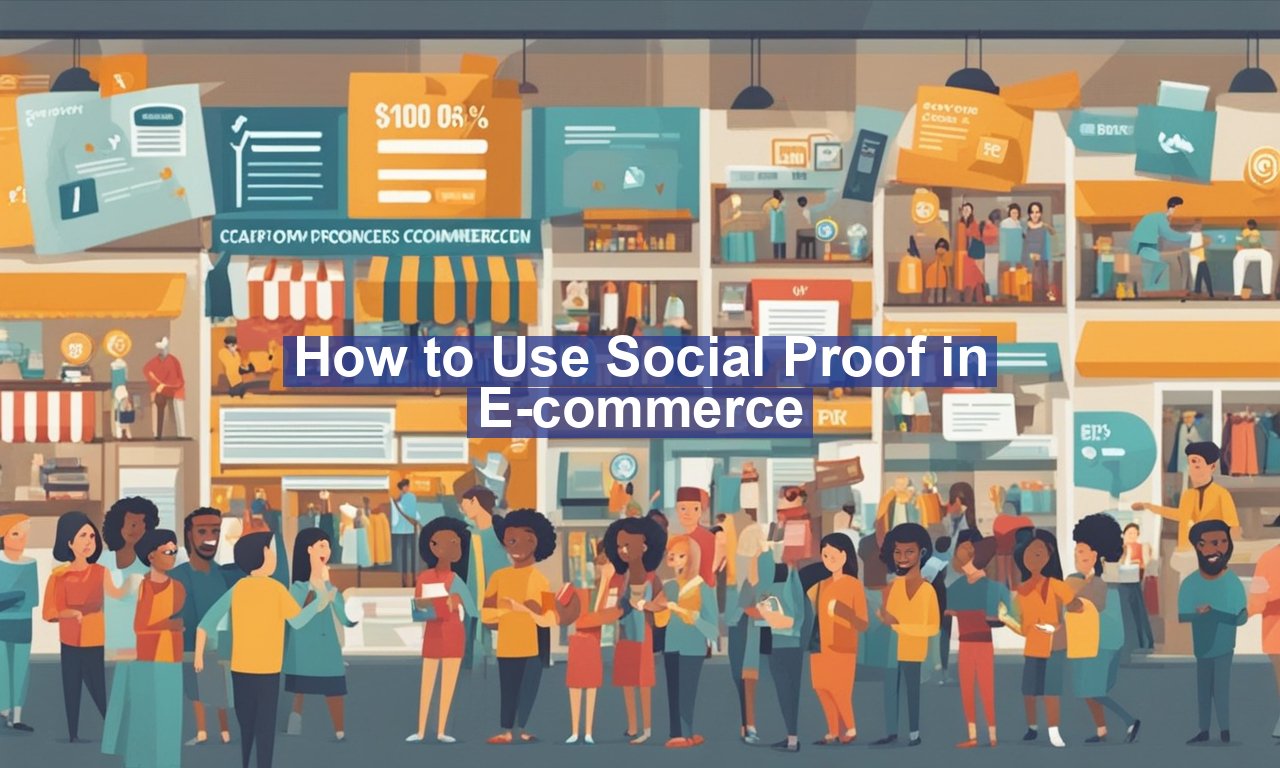How to use social proof in E-commerce, imagine you’re shopping online for a new pair of headphones. You find two options that look equally good, fit your budget, and have all the features you want. Yet, one has hundreds of positive reviews and several testimonials from happy customers, while the other has just a handful of reviews with mixed feedback. Which would you choose? Most likely, you’d go with the first option.
This illustrates the power of social proof in e-commerce, a psychological phenomenon where people look to others’ actions to inform their own decisions. In this article, we’ll explore how to effectively use social proof to your advantage in the online retail world, ensuring your business doesn’t just compete but thrives.
Understanding How to Use Social Proof in E-commerce
At its core, social proof is about credibility. It’s the idea that if others are endorsing a product or service, it must be good. This concept can transform your online store, enhancing customer trust and boosting sales. But how exactly does it work in e-commerce?
The Psychology Behind It
Humans are inherently social creatures. We often rely on the opinions and actions of others when making decisions, especially when we’re uncertain. According to Dr. Robert Cialdini, an expert on the science of persuasion, social proof is one of the key principles of influence. It leverages the idea that people tend to follow others’ behaviors, assuming those actions are correct or superior.
Implementing Social Proof in E-commerce
Customer Reviews and Ratings
Reviews and ratings are perhaps the most direct form of social proof. They show potential customers that others have used and benefitted from your product, adding a level of trustworthiness. To maximize their impact:
- Encourage customers to leave detailed reviews after purchase. The more specific and positive, the better.
- Response to reviews, both positive and negative. It shows you care about customer feedback.
- Showcase average ratings on key product pages to make them easily visible to prospects.
User-Generated Content (UGC)
People love sharing their experiences online, especially on social media platforms. User-generated content, such as photos, videos, or posts shared by customers, can serve as powerful testimonials. Implementing UGC can include:
- Creating a branded hashtag for customers to use when sharing their experiences.
- Featuring customer photos and stories on your website product pages.
- Reposting UGC on your social media accounts, providing social proof and enhancing your brand’s community aspect.
Influencer Collaborations
Partnering with influencers enables you to reach their established audience. When a trusted influencer shares your product, it carries weight with their followers. To effectively use influencers:
- Choose influencers whose audience matches your target market for maximum impact.
- Seek genuine partnerships where the influencer actually uses and approves of your product.
- Amplify their promotions by sharing on your own channels too, creating a cohesive marketing message.
Testimonials and Case Studies
Using testimonials and detailed case studies can build credibility and provide concrete examples of how your product solves real-world issues:
- Display customer testimonials prominently on your site, focusing on key benefits or transformations.
- Create case studies that tell compelling stories about your product, highlighting real customer success.
- Include specifics such as statistics or before-and-after results for a more powerful impact.
Advanced Social Proof Strategies
Trust Badges and Certifications
Displaying trust badges from recognized organizations or certifications can enhance perceived reliability, especially for new customers who might hesitate with an unfamiliar store. You can use:
- Security badge indicating that your site is secure and transactions are protected.
- Industry-standard certifications, like “organic” or “FDA approved.”
- Affiliations with well-known marketplaces or ratings agencies.
Live Statistics
Showing live statistics, such as the number of visitors currently on the site or purchases made in the last hour, can trigger the herd mentality, motivating visitors to join the “crowd” by making a purchase too:
- Utilize pop-ups or notices displaying these stats in real-time.
- Ensure that the data is accurate and updated frequently to maintain credibility.
Localize Your Social Proof
Customers may relate more to testimonials and reviews from people in similar demographics or geographical locations. Adding localization to your social proof strategy can enhance relatability:
- Segment testimonials by region, if possible.
- Customize content for various markets, emphasizing how the product fits specific local needs or culture.
Conclusion
Incorporating how to use social proof in E-commerce into your e-commerce strategy not only builds trust but also encourages potential customers to interact and purchase from your online store. Whether it’s through reviews, user-generated content, or influential partnerships, using social proof can dramatically improve your business’s credibility and conversion rates. As you apply these techniques, you’ll find your e-commerce store not only competes but stands out in a crowded digital marketplace.
For those eager to dive deeper into this topic, consider reading more about the psychological aspects of social proof and its various applications. These resources offer greater insight into understanding consumer behavior and fine-tuning your marketing strategy.


